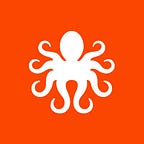How Designers Can Get More Comfortable with Data
by Lisa Woods
“We do our best to distill complex datasets to actionable insights.” — Jeffrey Wong on the role of data scientists within Netflix
In the past months, product and service design firm argodesign has worked on several data-driven projects. For instance, recent startup and client Sano allows people to “continuously monitor important markers in their body’s chemistry.” Consequently, they can make thoughtful choices about the way they eat, move, and live. We also teamed up with agriculture data startup Farmlink on a benchmarking product to help farmers see how their yields stack up to previous harvests or their peers’ yields.
Invariably, data science is playing — and will continue to play — a large role in product design. Accordingly, we designers need to educate ourselves about the rapidly growing trend of data-driven design and adapt to the challenges it is bringing to our role as product designers.
Why Your Next Client May Be a Data Scientist
While internet tech companies have always been data-driven, we now find that many more companies are creating data-driven products. This trend is the result of major innovations in the field of data science which have made data products easier to build.
What Design Brings to Data-Driven Products
One day soon, a client with a core product that relies on innovative AI software will come knocking on your studio door. Or you may be brought in on the ground floor of an early-stage start-up that believes it has killer data. Maybe you will join a mature start-up that is seeking to extract more nuance and value from their large amount of existing data. Or you might work with a behemoth that needs to leverage data to rediscover a competitive edge. Whatever the circumstances, they will need your help in figuring out how users can interact with their data in a meaningful way. How do you determine what’s just noise versus what’s essential, what to work on and get out the door first?
1. Keep data-driven design user-centered
As designers, we know that viable products must help users do something useful. It’s our imperative to continually remind our clients of that. We can help data scientists see beyond their product as a data problem and focus on what users value.
2. Use design research to prototype, determine MVPs, and assess user value
Simply, design research can and should be used to investigate the value of a product for its potential users. Design research ensures that the product is focused on the target audience. Data science clients deeply understand their numbers, and need to be as intimately familiar with their users. Qualitative research reliably uncovers insights and critical information about users’ goals, desires, and limitations.
3. Champion simplicity and focus
Starting simple is the most successful way to remain simple. Oftentimes a data-driven product will become unfeasible because it’s just too complicated. A complex data product, while ambitious, often increases in complexity as it is developed. Designers know how to start simple, and, even though it is difficult, keep it simple.
4. Abolish data avalanches
As designers, we get excited by the possibilities of data. However, users are not excited by products that are difficult to understand. We need to provide useful information in bite-sized pieces, offering as much as is needed at any given moment, no more or less. Users confronted with too much data become overwhelmed. We need to stay mindful of the fact that users don’t understand data the way data scientists do. Our role is to translate, simplify, and make data useful for the user.
5. Tell compelling stories
A story is much more than a number. For example, a predictive engine can offer a suggestion with a 78% probability. But to the user, this is not a story, and it means little. Suggesting something as simple as “You might like this,” transforms numbers into a story, and creates an experience. Follow that up with a detailed, specific example using terms the user will understand. Our job as designers is to take a statistic and turn it into an easy to comprehend insight for the user.
6. Don’t drown in domain knowledge
Some understanding of the industry you are designing for — whether it’s agricultural data or blood sugar levels — is necessary. The trick is to know when you know enough, and this is a determination you will have to make for yourself. You’ll never be an expert, nor should you try to be one. Your expertise is in design and your clients have sought you out for this knowledge. Do your due diligence, but also generate designs and prototypes sooner rather than later. Create something that stakeholders and users can offer feedback about. Allow the design to be your primary focus, otherwise accumulating “domain knowledge” will become a distraction.
Mark Rolston of argodesign offers some cogent advice: “Based on the work we’ve been doing lately, we as designers need to understand data science. I don’t mean we need to become data scientists ourselves, but we should become literate in the subject.”
This story originally ran in HOW Design on March 4, 2016.
Lisa B. Woods is an interaction designer, researcher, and community organizer who works at the intersection of design, art, and emerging technology. She is part of the amazing team that is argodesign in Austin, Texas.
lisa b. woods | argodesign | facebook | twitter | linkedin | instagram
